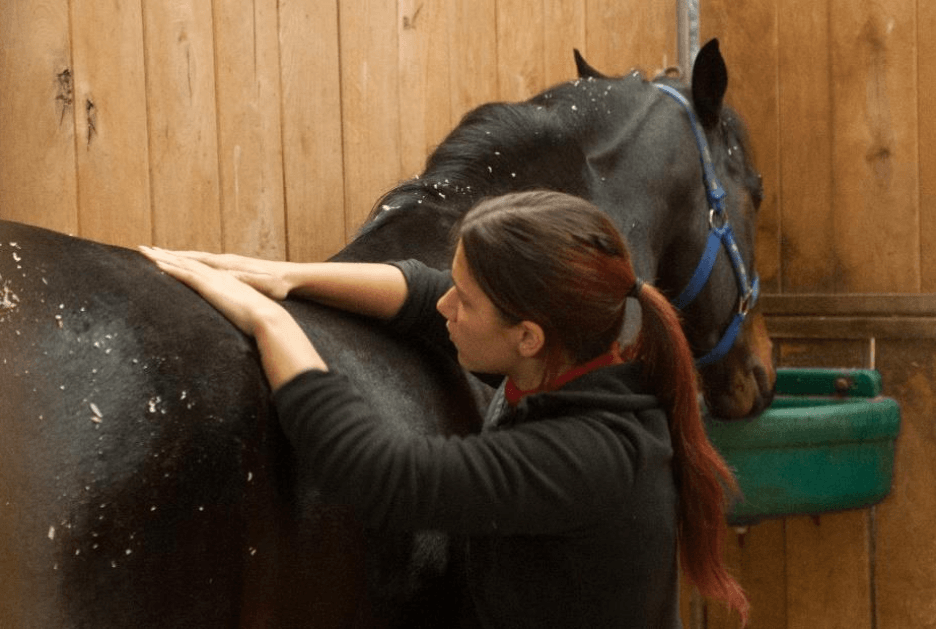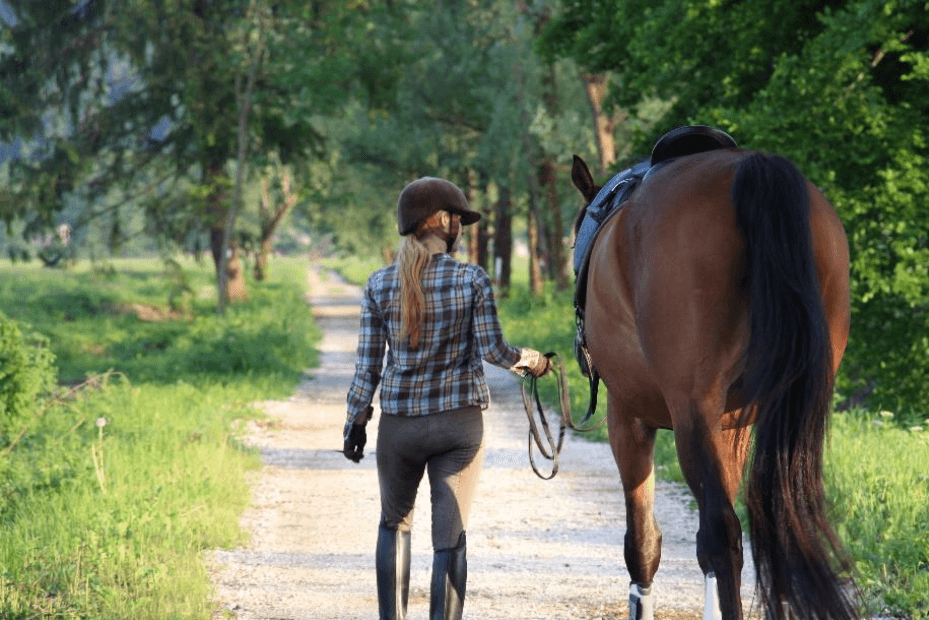Keeping an eye on muscles

Athletes are amazing!
Athletes’ bodies can withstand rigorous training, long hours and the stress of competition and as a result achieve awe-inspiring feats. And yet a single bad step, a push too far or a moment of lost concentration can lead to an injury that can severely limit or even end the athlete’s career.
This is why athletes need to pay attention to every little detail. They need to be absolutely aware of everything that is happening in their bodies and in their heads at all times.
To ensure this, there is a team of experts behind every athlete ranging from nutritionists, trainers, bodyworkers and psychologists, making sure all systems are working at optimal capacity. Despite all this, things still sometimes go wrong.
The horse as an athlete
The horse is an athlete too. If you own a competitive horse, you know this. If you are an owner of a recreational pony that goes out for a light trail ride three times a week this idea might surprise you. But even the weekend warrior is an athlete.
Even though his schedule isn’t as rigorous, there are still demands placed on his body that he has to cope with. He is still expected to perform to our standards. Horses didn’t choose to be athletes, so it’s our responsibility to make the work we place upon them enjoyable and pain free.
It is our responsibility to ensure the horse’s body and mind are functioning optimally so he can perform to our standards, whatever those standards might be.

Making sure the horse’s body is working optimally is tricky. On the one hand, our demands must increase with time, if we want the horse to become stronger. But on the other hand, if we take this a step too far, we end up with injuries.
This is tricky enough with humans, but with horse’s it’s almost like a lottery. Not only are they not able to tell us when something is wrong, they actively try to conceal it! It is in their nature to hide smaller issues and compensate for pain by adjusting the way they use their body.
So often we don’t even know anything is wrong until something is very wrong. Keeping an eye on your horse’s muscles is a good way to spot any potential issues before they become serious.
Listening to the muscles
The way the horse is trained will first be reflected in his muscles and connective tissue so evaluating these will give us a good idea of what we’re doing well and what areas might need some changes.
Regular bodywork can resolve minor soft tissue issues and it also provides us with an insight into how our work is affecting the horse’s body. It’s normal for athletes to occasionally carry excess tension in their muscles – after all, they are working really hard.
If these issues aren’t resolved, they eventually start to affect the way the horse moves. Perhaps tension in his poll causes him to carry his head differently, or perhaps it makes him tense up his jaw muscles to cope with the discomfort.
Tensing his jaw will limit his ability to bend properly and he will start to use his body incorrectly on a circle. This will lead to tension in other areas of the body. It’s a vicious cycle.
The great thing about muscles is they work as a team. If one can’t do its job properly, other muscles step in and do more work so the horse can keep moving. This works really well for short periods of time, but if this compensation persists for a long time, it leads to dysfunction and pain.
He might develop asymmetries, become stiffer in his movements and may exhibit behavioural problems. Eventually, his muscles can’t compensate any longer and the horse will start to break down. It is rarely the muscles that are the weakest link, so the final result will more likely be a tendon injury or degenerative joint disease.
Serious injuries translate into a long period of rehabilitation, a lot of downtime for the horse and a big impact on the owner’s wallet. If, on the other hand, we catch that same poll tension early on, we can resolve it before it begins the vicious cycle of compensation.
This will usually mean no downtime for the horse and a much smaller expense.

The muscles don’t lie
Keeping an eye on your horse’s muscles will also enable you to make better training decisions. If the bodyworker finds tension in your horse’s poll, this might be a one-time thing. Perhaps it’s some tension left over from the time you were struggling to teach flying changes and the horse didn’t quite understand it.
But if the bodyworker reports this every single time he or she sees the horse, it might be time to ask yourself if you need to make any changes to your training practices. Maybe your horse seems to be losing his topline muscles in spite of the fact he’s working well. In that case, it might be time to check the saddle.
Or perhaps it’s time to rethink those canter pirouettes you’ve been practicing, but your horse might not be ready for. The muscles are a mirror to your training. If they are developing well, you are doing something right. If they are tense, some overdeveloped and some underdeveloped, then you need to take a step back and make some changes.
The muscles don’t lie. Sometimes what they’re telling us might be hard to hear, but admitting your mistakes and making changes is what enables us to grow. As riders and as people. So listen to your horse’s muscles. Let them guide you towards becoming a better rider, a better trainer and a better horse owner.